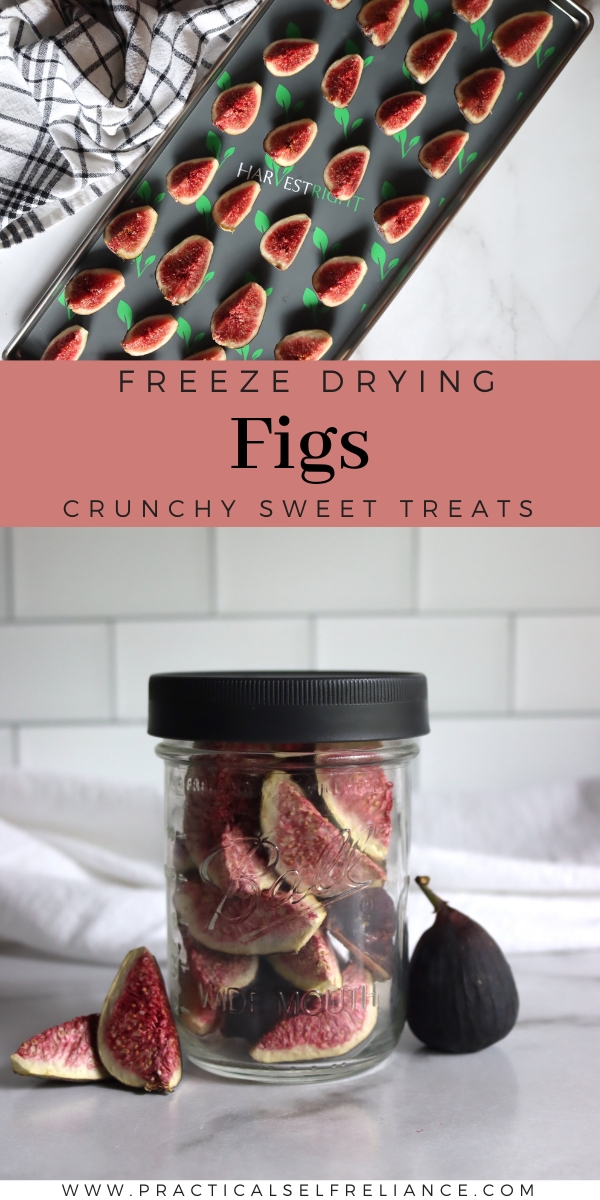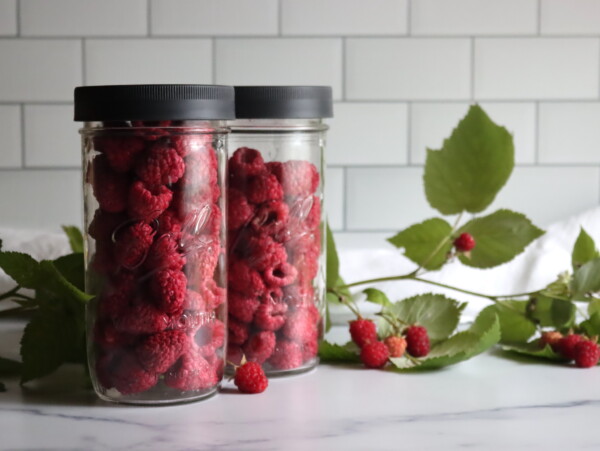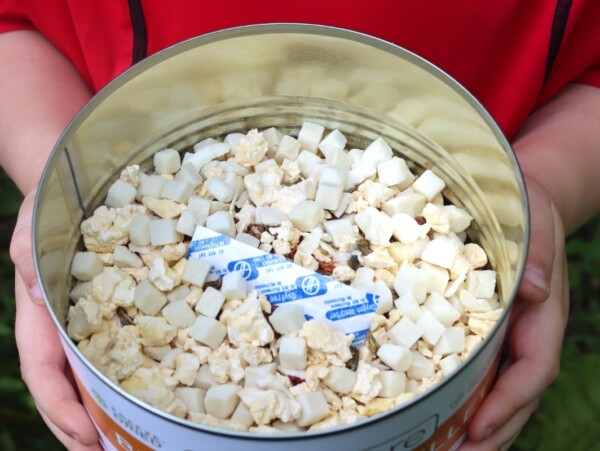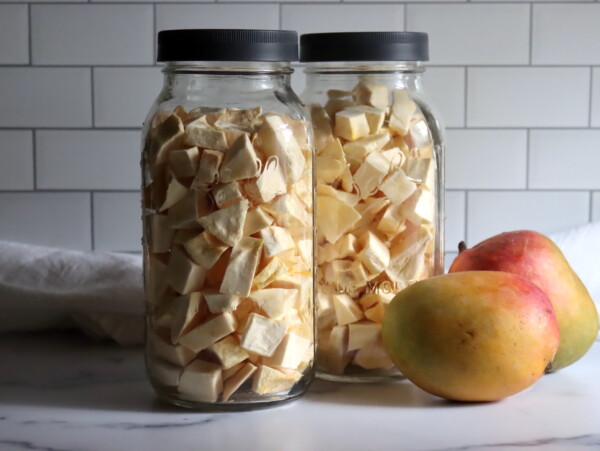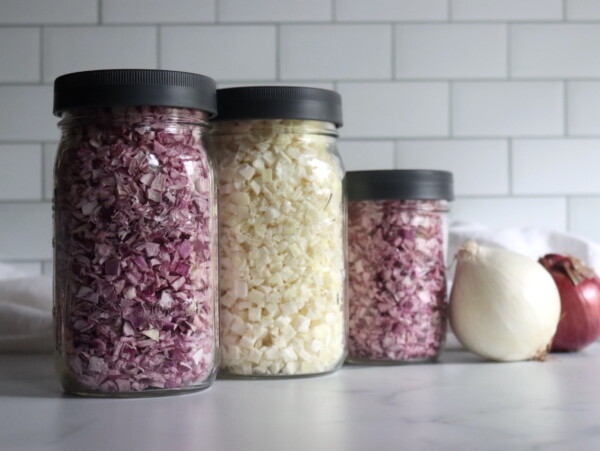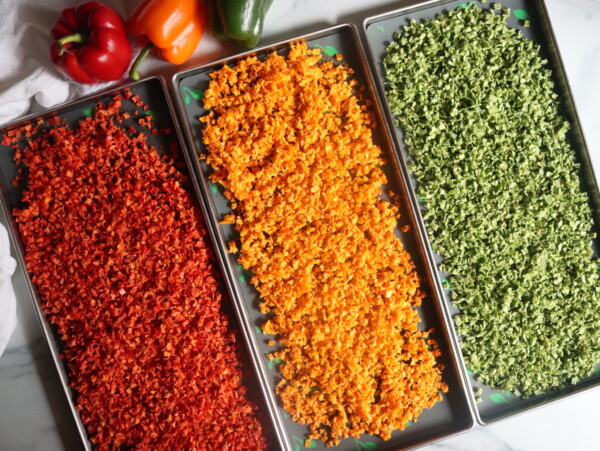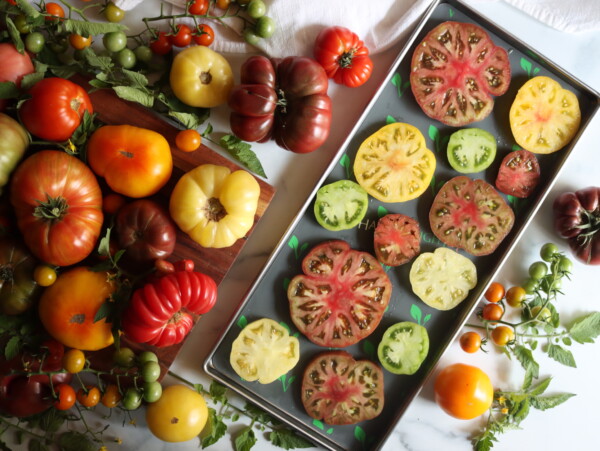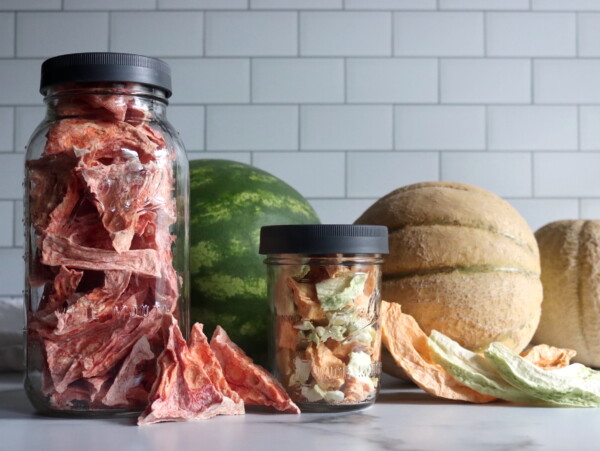Affiliate disclosure: This post may contain affiliate links. Please see our Privacy Policy.
Freeze-dried figs make fantastic snacks, tasting much like a crispy cookie. While these delicacies might be expensive to buy, freeze-drying figs at home is easy to do!
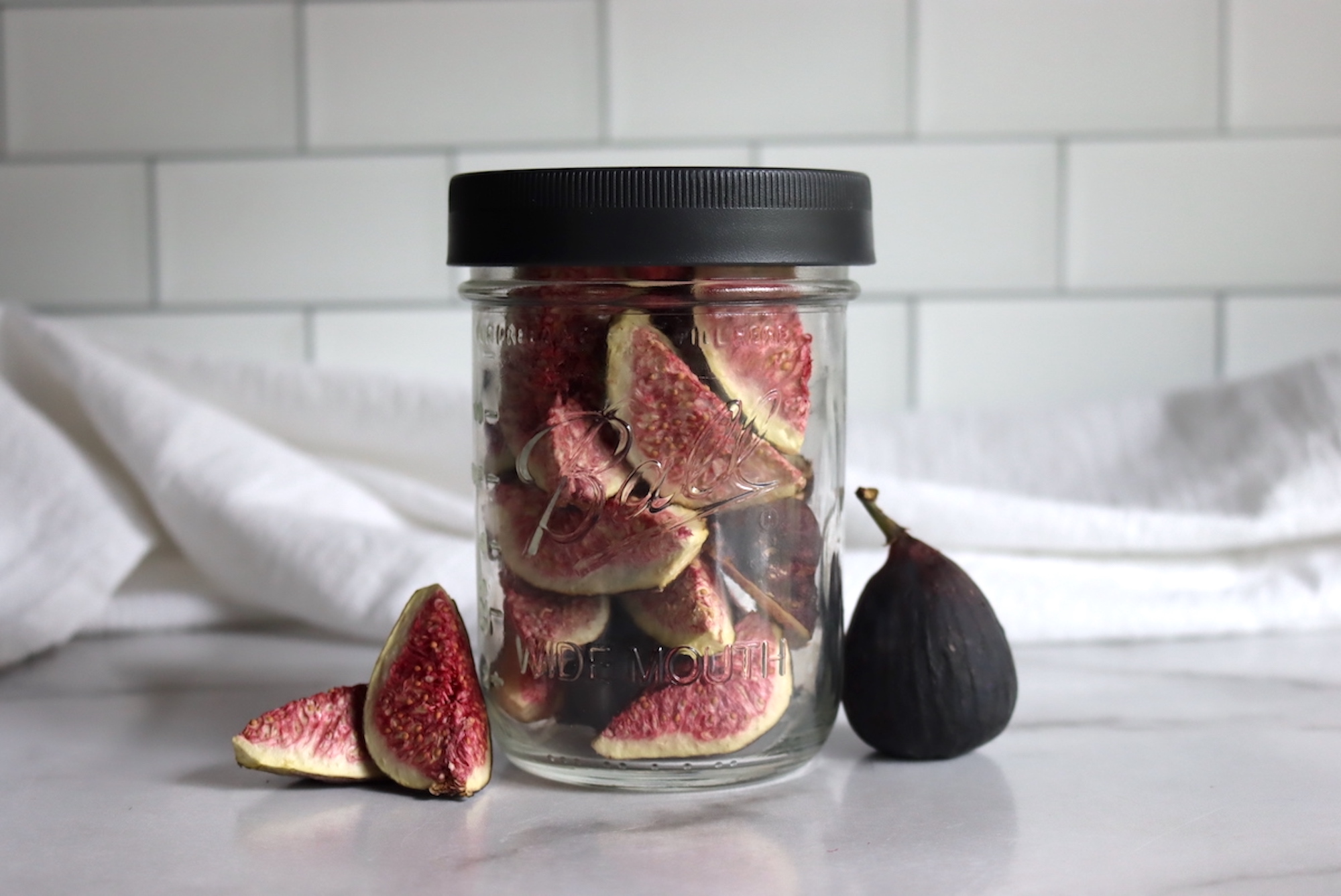
Table of Contents
Freeze-drying is a spectacular preservation method to preserve figs, and these short lived fruits can use all the help they can get to stay fresh. The freeze-drying process concentrates the flavor of figs, making them a sweet, healthy snack with a crunch.
Figs are good for us and are a great alternative to consuming sugary snacks, and they basically taste like freeze dried candy. Bite into a freeze-dried fig, and you’ll realize it tastes like a sweet, jammy cookie. Freeze drying keeps their flavor intact but gives them a pleasant crisp texture that’s satisfying, like a potato chip, but not salty or fried.
I grew up eating fresh figs from my backyard tree, and though they’re prolific, there aren’t all that many good ways to preserve figs. You can pickle figs and can figs and make fig jam, but all these methods involve a lot of sugar, and you lose much of the fresh fruit flavor in cooking. Fig wine is lovely too, but that’s best reserved for special occasions rather than everyday snacking.
Freeze-drying lasts longer than just about any other method, and it preserves both flavor and nutrition. Using a home freeze dryer to preserve figs ensures these elusive little fruits are available all year round for cooking and snacking.
(If you’d like to learn more about the freeze-drying process, I’d propose looking at my beginner’s guide to freeze-drying at home.)

What’s the Difference Between Freeze Dried Figs and Dehydrated Figs?
Freeze drying and dehydration are completely different processes, and they give you very different results.
First off, you’ll notice that dehydrated figs are more pliable as not as much moisture is removed from them. By contrast, freeze-dried figs have nearly all water removed and are firm and crispy.
For this reason, freeze-dried fruit will last years longer than dehydrated fruit, no matter the variety.
Dehydration uses heat to dry figs, giving foods a rubbery texture and destroying more of the flavor. Freeze-drying removes water with no detriment to flavor. The process takes about the same amount of time, but the end result is far better.
Dehydrating figs is fine, but freeze-dried figs are truly exceptional. Freeze-dried fruits stay the same size and can be reconstituted to near-fresh form easily with a little water.
Reconstituted figs can be used in all sorts of recipes, from jam and chutneys to baked goods like fig cake and fig bars. Personally though, I like them just as they are for a quick, crunchy snack.
Best Figs to Freeze Dry
It is important to use figs at their peak ripeness to get the best quality freeze-dried product. Seek out figs that are soft, but not mushy. Avoid hard figs as they will not continue to ripen once picked.
Figs that possess a sour smell have passed their prime. Steer clear of these as well.
Freeze-drying underripe or overripe fruit will do nothing to fix it. You must select ripe figs to get the best-tasting result.
Test figs before freeze-drying. If they taste good now they’ll taste good later!
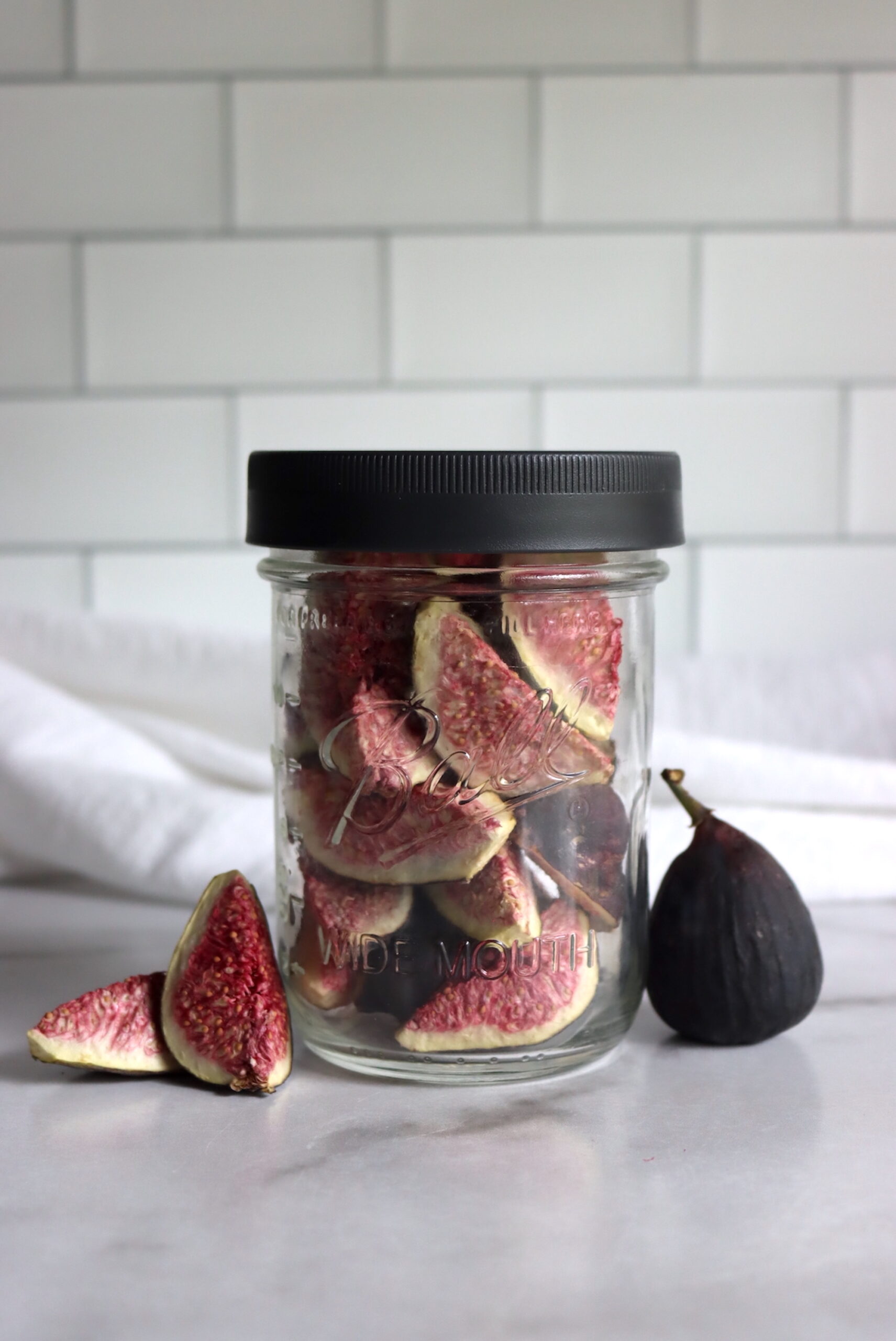
Freeze Dried Figs Yield
One pound of fresh figs is equal to about 9 medium figs or 12 small figs. When chopped, a pound of figs should yield 2-½ cups.
When freeze-dried, your figs should stay relatively the same size, so 2-½ cups of fresh figs should still yield 2-½ cups of freeze-dried. The only difference will be in weight.
How many figs you can fit per batch depends on a few factors: the size of your figs, how you slice them, and the capacity of your freeze-dryer.
I’ll dice my freeze dried mangoes, and slice my freeze dried strawberries, but I like to quarter my figs because they just look so nice in a jar that way.
Every freeze drying machine is rated for a certain amount of food. I have a large model — it’s rated for drying 15 to 20 lbs of food across 5 trays. (Note: my model is older, and the new large freeze dryers now have 6 trays.) This works out to 3 to 4 lbs per tray max.
Still, I actually prefer to pack my trays less densely — more like 2 to 3 pounds per tray. The food looks better (no sticking), and the freeze-drying time isn’t as long.
Here are the given capacities for each freeze dryer size:
- Small Freeze Dryer: Processes 6 to 10 pounds of food per batch, across 4 trays (434 square inches of drying space).
- Medium Freeze Dryer: Processes 10 to 15 pounds of food per batch, across 5 trays (675 square inches of drying space).
- Large Freeze Dryer: Processes 18 to 27 pounds of food per batch, across 6 trays (1107 square inches of drying space).
- Extra Large Freeze Dryer: Processes 40 to 50 pounds of food per batch, across 7 trays (2257 square inches of drying space).
Supplies Needed
What all is needed to freeze-dry figs at home? You will require the following tools:
- Figs – Both fresh and frozen are perfectly fine.
- Home Freeze Dryer – A pretty essential tool, your home freeze dryer is an indispensable item. If you haven’t yet decided on a model, consider going for a larger machine — they’re more efficient and cost less to run per pound of food.
- Cutting Board and Knife – For chopping figs into more manageable pieces. Figs can be cut in half, fourths, sliced, cubed or diced. Try to keep slices uniform in thickness.
- Silicone Tray Liners (or Parchment Paper) – Lining trays can quicken clean up and prevent the need to pry fruits off trays.
- Colander and Towels – Needed to wash the fruit before freeze-drying. To prevent excess water from extending the dry time, be sure to dry thoroughly on towels before slicing.
- Mason Jars (Or Airtight Storage Containers) – These deliciously snackable fruits can go fast, so we tend to keep them in mason jars for use within the year. For longer storage, sealing items within Mylar bags with oxygen absorbers is crucial.
- Vacuum Sealer (Optional) – A vacuum sealer is a great purchase to give items stored in mason jars a longer shelf life. It helps to seal dry goods and freeze-dried items with minimal air inside.
- Label Tape and a Pen – Never skip this step! Labeling your preserved food and the date you sealed it is essential no matter if you’re using mason jars or mylar bags.
Preparing Figs for Freeze Drying
Start by washing your figs, if needed to remove any lingering dirt or bacteria. Next, you can slice them any way you wish for freeze-drying.
Figs can be cut in halves, quarters, wedges, slices or left whole. I prefer to remove the stem and then slice each fig in half. Halved figs can need a longer freeze-drying time due to their size so you can also slice them smaller or even dice them.
You can even puree figs and freeze-dry them into a powder if you like. This is less versatile than fig chunks though — and you can always pulverize your freeze-dried figs into a powder post freeze-drying as well.
Next, you can move directly onto running your freeze-dryer or pre-freeze figs to shorten the freeze-drying time a little more. Figs can be pre-frozen directly on the freeze-drying trays if you have a deep freezer. If not, you can also freeze figs in freezer bags (they just might require a little muscle to break them apart once frozen).

How to Freeze Dry Figs
After slicing your figs, you’re all set to operate your freeze-dryer.
Start by turning the freeze-dryer on and letting it pre-chill for 30 minutes.
Time to arrange the figs on your trays! If desired, line freeze-drying trays first with silicone liners or parchment paper to prevent sticking.
Next, spread your figs across the trays. Do know that the more densely you pack the figs, the longer your freeze-drying time will be.
Once your freeze dryer is pre-chilled, load the trays inside and close the door. Press “continue” to set your freeze dryer to run for a full cycle and you’re all set.
To ensure your figs are adequately dry, feel free to add some extra dry time at this point. You really can’t over-dry foods in a freeze-dryer.
Check back in a day or two, and you should have perfectly freeze-dried figs!
The time it takes to fully freeze-dry figs can vary widely based on how you choose to slice them. If you halve or quarter figs, you can expect them to take somewhere between 30 to 36 hours.
A few additional factors can impact freeze-drying time. These include:
Pre-Freezing: If you pre-froze your figs before placing them in the freeze-dryer, this will save some time in the initial freezing cycle, lessening overall time.
Piece Size: Big pieces (or whole figs) will take longer to dry than smaller ones.
Moisture in the Fruit: Fig varieties with a higher moisture content will take longer than low moisture varieties.
The flavors in your freeze-dried figs will rely largely on the quality of the figs you chose. Freeze-drying will not alter a food’s flavor in any way, however, flavors may seem more concentrated due to the removal of all that water.
The way your figs taste when going into the freeze dryer is how they’ll taste coming out. If you choose ripe and fragrant figs, then that’s what you’ll get after freeze-drying (just in a crispier format).
Figs that are correctly packaged can last for 30+ years with proper pantry storage. When packing for this long, you will need to seal figs in mylar bags with oxygen absorbers.
If figs are kept conveniently on the kitchen shelf in a mason jar or another non-mylar airtight container, they will keep for one to two years or so. Opening jars frequently will lead to an even shorter shelf life.
Each time a jar is opened, moisture is allowed back into the jar via ambient humidity in the air. This can quicken spoilage.
Figs, once fully freeze-dried, should be firm and crispy. To test for doneness, take a larger piece and break it in half. It should snap easily. Inside it should be completely dry — no ice or moisture at all.
If your figs are not fully dried, you’ll have to extend the dry time a bit longer and check again in a few hours.
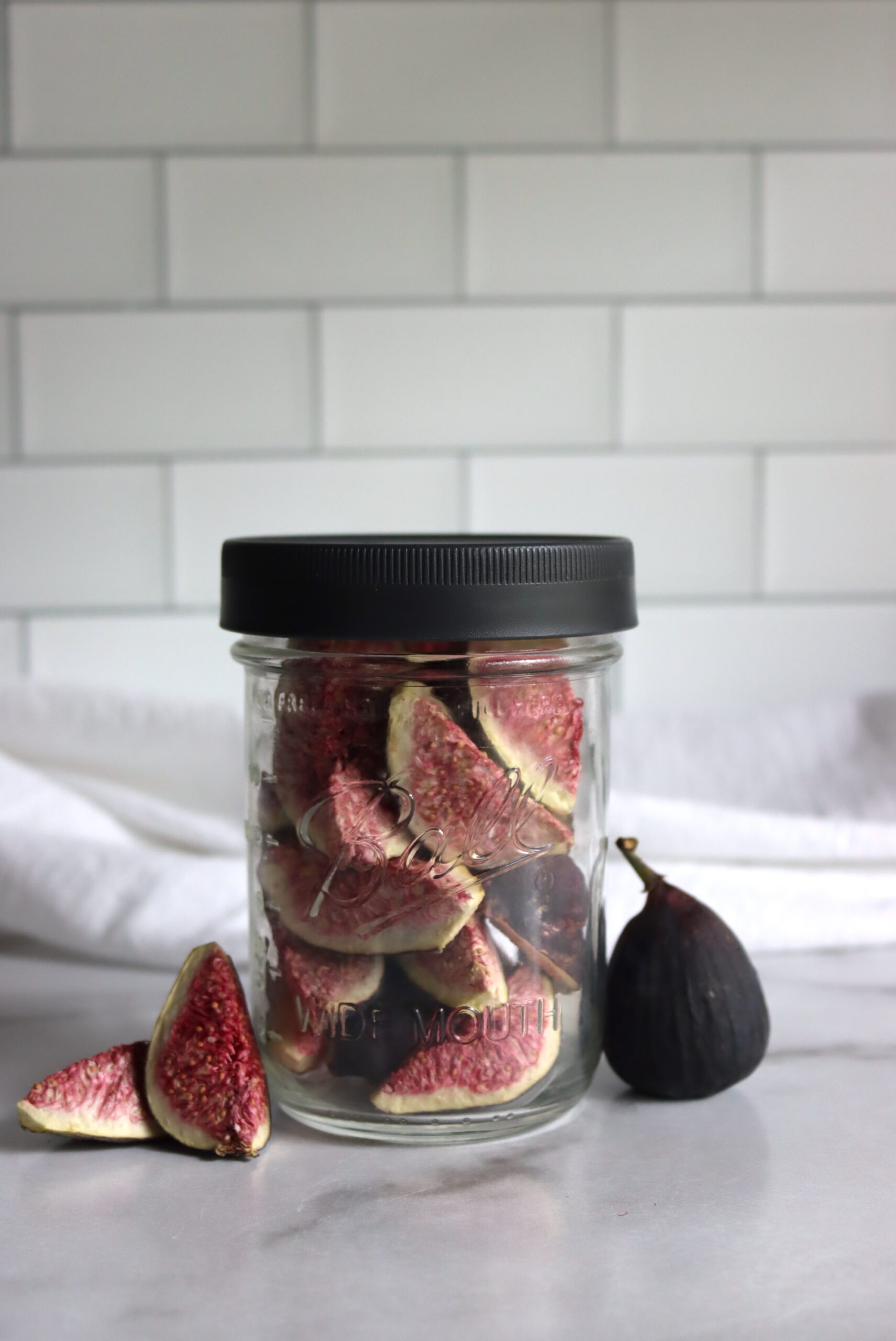
Reconstituting Freeze Dried Figs
Chiefly, most people eat freeze-dried figs with no reconstituting needed. Their crispy texture and sweet, jam-like flavor make them great for snacking, tasting almost like a fruity cookie.
Freeze-dried figs are also wonderful added to granola, trail mix, or crumbled on a variety of plates.
If you do decide you need to rehydrate figs to use in a recipe that calls for fresh figs, you can do so. Pour the necessary amount into a bowl and cover with warm water. Let the figs absorb the liquid (for 20 to 30 minutes). Drain off the excess water, then use as desired.
How to Store Freeze Dried Figs
Looking to store figs for use within a year or two? In that case, storing in mason jars with tight-fitting lids should work fine. This method is great for keeping healthy snacks at eye level in the pantry, so you’re more likely to snack on something healthy than something sugary or salty.
If you’d like to pack freeze-dried figs for long-term storage, mylar bags and oxygen absorbers are going to be needed.
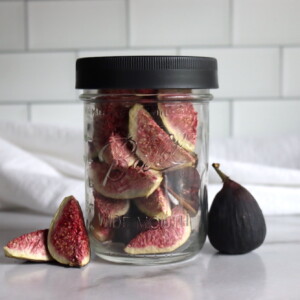
Freeze Drying Figs
Ingredients
- Fresh or Frozen Figs
Instructions
- Begin by setting your freeze dryer to pre-chill for at least 30 minutes.
- Next, wash the figs, pat dry, remove the stem and slice as desired. Figs can be cut into halves, quarters, slices or wedges. (Freeze-drying whole figs is possible, but will take much longer than sliced.) Dicing or pureeing is also an option.
- Arrange sliced figs on freeze-drying trays in a single layer. Trays can be lined with parchment paper or silicone liners for easier removal and cleanup, if desired.
- Once the freeze dryer is pre-chilled, insert your trays inside and shut the door. Set the freeze dryer to run for a full cycle by pressing “continue.” Times will vary, but sliced figs usually take between 30 and 36 hours.
- When the cycle has finished, remove a tray and check to see if the figs are adequately dry. They should be firm and crunchy, not bendable. If not fully dry, add more dry time and check back in a few hours.
- Once the figs are thoroughly freeze-dried, remove the trays and set the freeze dryer to defrost.
- Immediately pack freeze-dried fruits for storage to prevent moisture reabsorption from the air. For short-term storage, airtight containers like mason jars will work. For long-term storage, sealing in mylar bags with oxygen absorbers is needed.
Notes
Freeze Drying Guides
